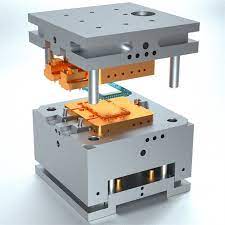A powerful market trend of miniaturization, driven by the medical device, consumer electronics, and automotive sensor sectors, is pushing the injection molding industry to the absolute limits of precision. The mass production of components that are microscopic, weigh less than a gram, and feature tolerances measured in single-digit microns ($\mu$m) has given rise to the highly specialized field of micro-molding.
This discipline presents extreme challenges for both production and tooling. From a tooling perspective, fabricating micro-molds is an art in itself. It requires specialized machining centers, such as micro-EDM and 5-axis micromachining, operating in stringently temperature-controlled environments to prevent thermal expansion of the steel during cutting. Gates may be as small as 100 microns, and the polishing and assembly of mold components must often be done under a microscope.
On the production side, standard molding machines lack the necessary precision. Micro-molding relies on specialized all-electric machines with micro-shot capabilities, often using a two-stage injection (plunger) system to ensure absolute control over melt dosage, as even a tiny variation can ruin the part.
Furthermore, the quality control process must be reinvented. Traditional tactile CMMs (Coordinate Measuring Machines) are unusable as they would damage or move the microscopic parts. Instead, the industry relies on non-contact metrology, such as high-resolution optical vision systems and industrial CT (Computed Tomography) scanning, to validate part geometry down to the sub-micron level. As demand for wearable tech, in-body diagnostics, and micro-fluidic chips accelerates, expertise in micro-molding is becoming a critical differentiator for advanced manufacturers.
Post time: Oct-30-2025

